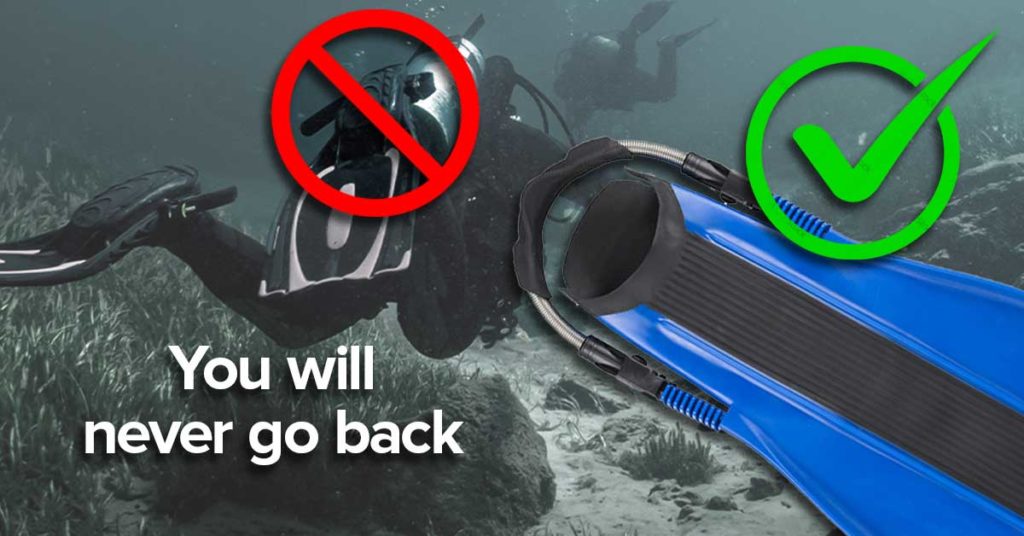Of all the modifications you can make to your dive gear, none will give you more absolute joy than the addition of spring heel straps.
- If you bought a better quality pair of fins in the last few years, odds are they already have these installed.
- If not, you are going to want to take advantage of the opportunity to fit them to your fins retroactively.
In this article, we will tell you why.
Emerging from the dark ages
If you bought a pair of scuba fins any time during the last century, odds are they had a strap and buckle assembly that looked like this:
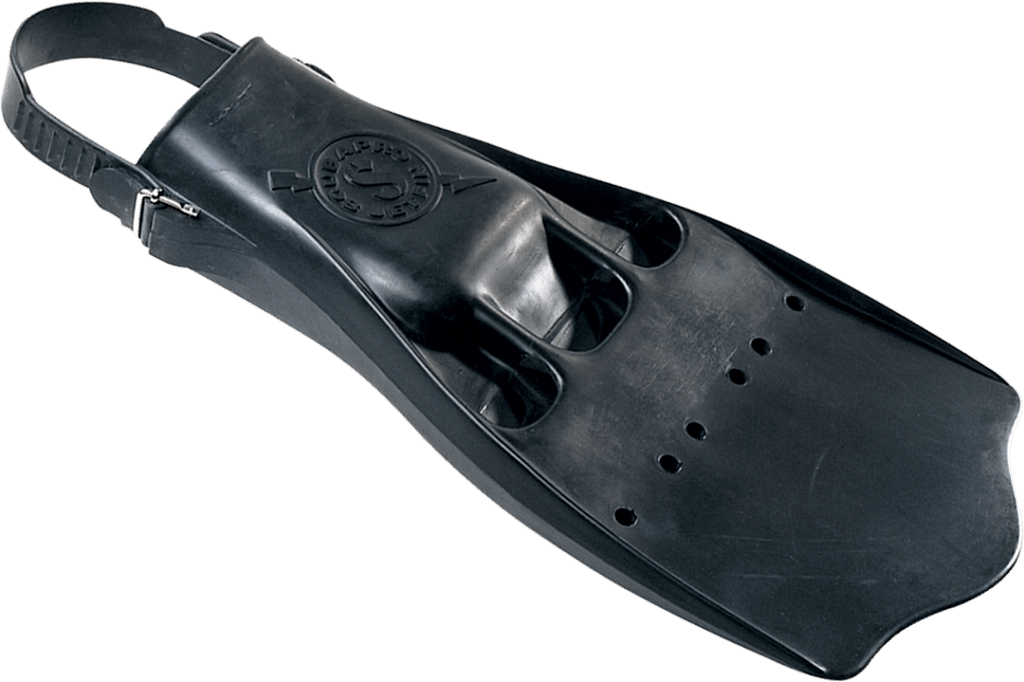
This design could best be described as barbaric.
- You couldn’t adjust strap length on the fly. You could only do so prior to suiting up.
- Adjusting strap length took a fair amount of strength. Many smaller divers couldn’t manage it.
- You could only adjust the straps so that they stayed firmly on your feet. Too tight and you would not be able to get the fins on. Too loose and you risked losing your fins underwater.
- Once you had the strap length properly adjusted, it was still a struggle to don and remove your fins. You had to be able to pull back far enough on the straps to get them over the heel of your boots. Despite being made from neoprene, the straps were hardly what you could call “elastic.”
- But, because they were made from neoprene, the straps would frequently oxidize and break. You never dared leave home without a set of replacement straps.
Dive boat captains hated these fins because it could take up to a minute or more for divers to struggle out of their fins and get back on board. This is not something you want to have happen when your boat is drifting toward the rocks or you have other divers to pick up who are now drifting farther from sight.
The next generation in strap design
By the end of the 1900s, we were beginning to see a new generation of fins strap assemblies that looked like this:
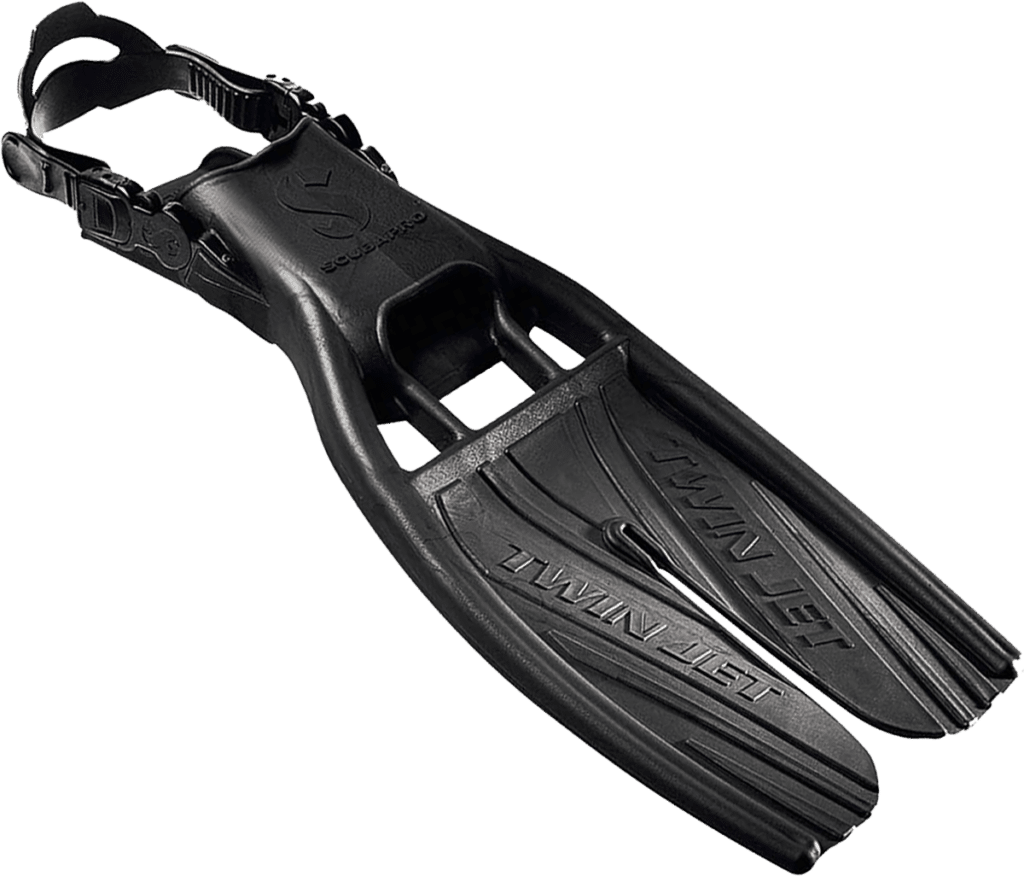
- You could tighten the straps simply by pulling evenly on each end.
- Removing the fins required nothing more than squeezing one of the Fastex®-style slide-release buckles. The strap would then pop open and the fin would come off.
- The strap assembly would also pivot downward so as to not block access to the foot pocket when you were donning fins.
These fins were not without their drawbacks, however.
- Despite appearances, most divers could not don their fins simply by re-attaching the slide-release buckle. You had to first re-attach the buckle, loosen the straps and then don the fins in a more normal fashion.
- Donning this type of fin was a multi-step process, often requiring two hands.
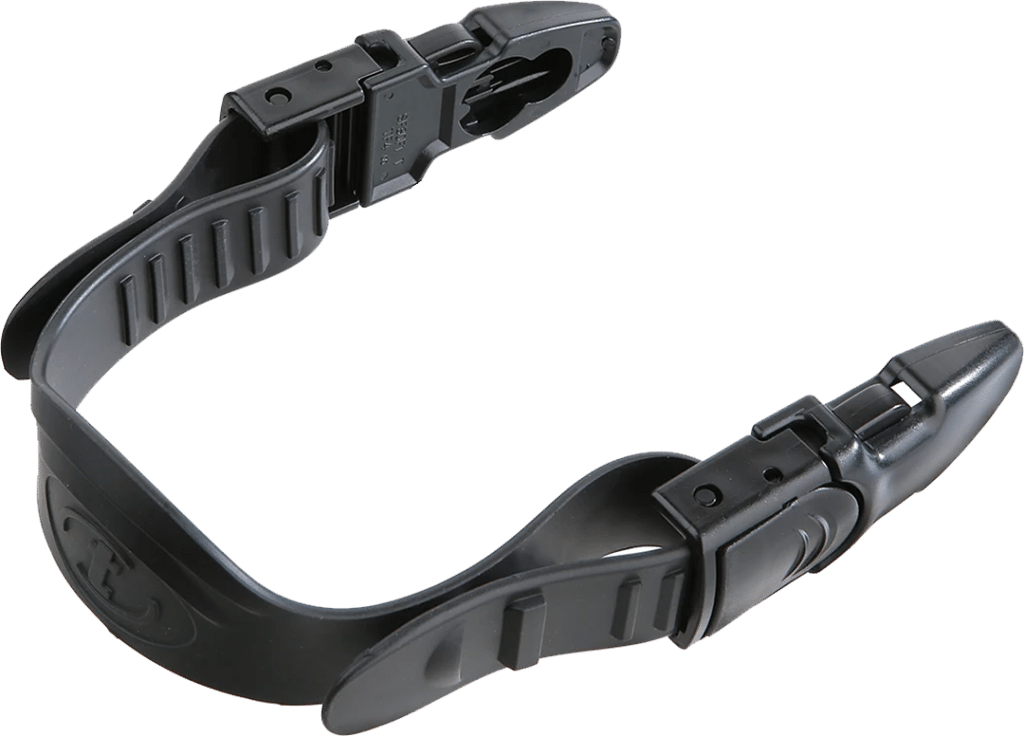
- The strap assemblies included many small plastic parts which were easily broken or lost.
Ironically, at the same time this sort of fin was gaining in popularity, spring-heel straps were also making a resurgence. You wouldn’t start to see them in any numbers, however, until the past decade.
Older than you think
Most divers think spring heel straps are a relatively new invention when, in fact, the design goes back nearly 50 years. In the mid-1970s, Farallon introduced a number of innovative products, among them were what they dubbed Fara-Fins. These came in two flavors:
- The top-of-the-line Fara-Fins incorporated a complex leg-brace assembly that ostensibly made the fins more efficient. Unfortunately, they were prohibitively expensive and time-consuming to don and remove. As a product, they bombed pretty badly.
- The more basic Fara-Fins, however, were a product well ahead of its time. They were simple, flat-bladed paddle fins similar to those preferred by today’s cave and tech divers. More significantly, however, is the fact that, instead of traditional fin straps, they introduced the first spring heel straps.
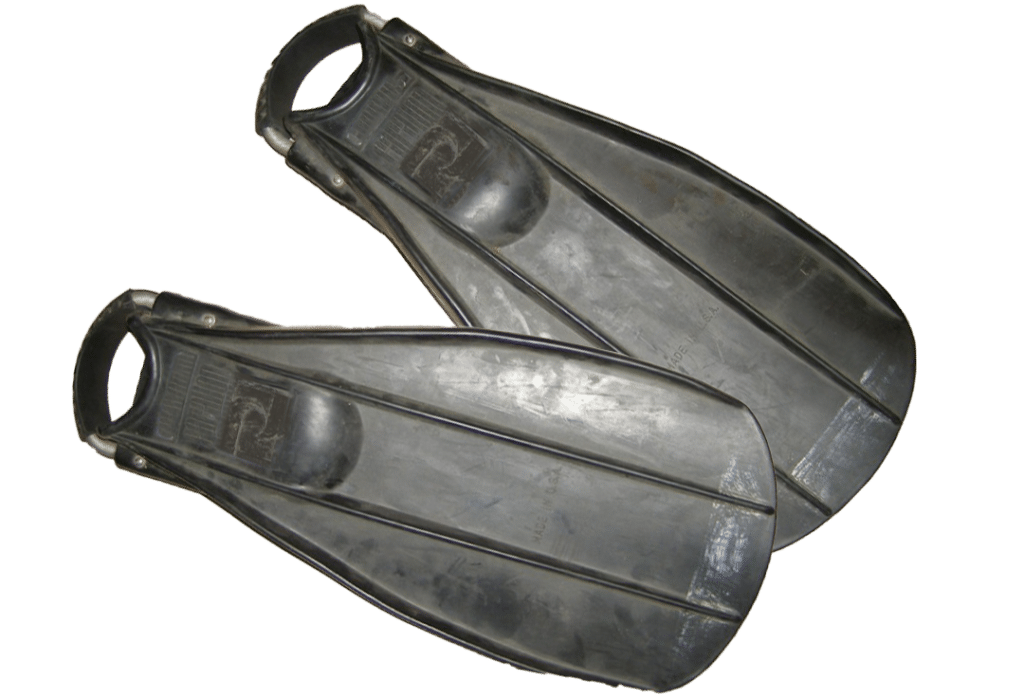
Unfortunately, Farallon did not last long as a company. Tekna acquired the rights to most of their equipment. Oceanic got the rights to the fins. Oceanic kept the fins in production for a while, but with a more conventional strap design.
At this point, spring-heel straps would remain largely forgotten for the next two decades.
The resurgence
In the mid-1990s, a group of cave divers, remembering the Fara-Fins of the 1970s, wondered whether they could adapt the concept to the Scubapro Jet Fins that were popular at the time. Using stainless-steel springs designed for screen porch doors, they made it work.
Soon, kits began appearing that included all the parts needed to adapt fins with old-fashioned straps to the more modern spring-heel variety. By the late 1990s, Dive Rite was producing tech-diving fins in which spring-heel straps were standard. Other manufacturers followed suit.
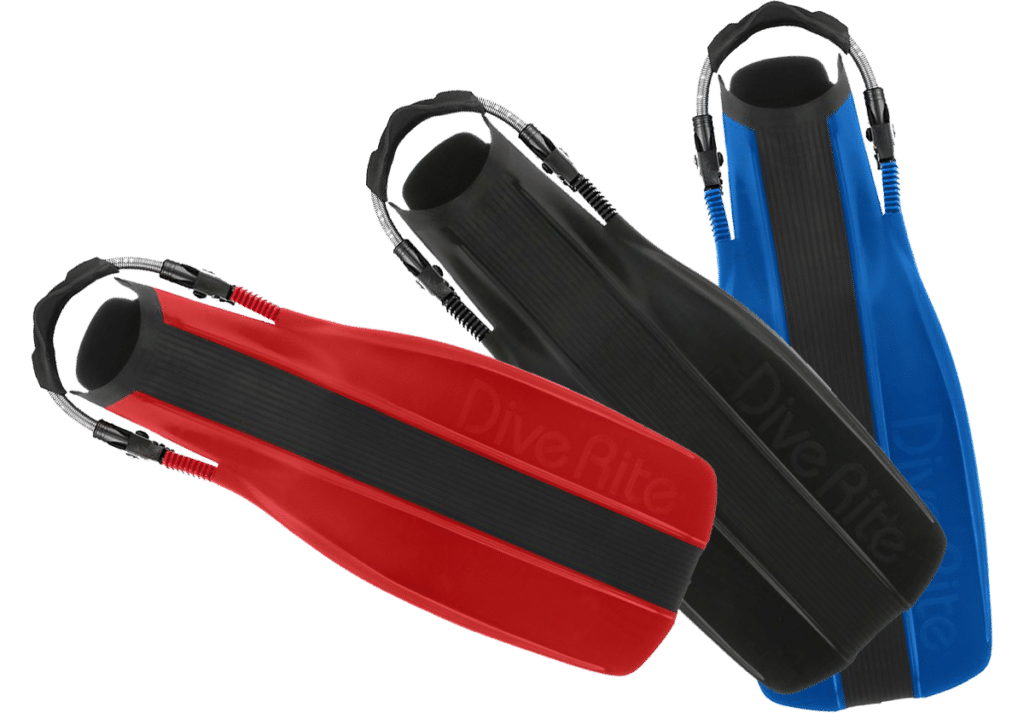
By the early 2000s, it was possible to purchase after-market spring-heel straps that would fit fins with quick-release buckles.
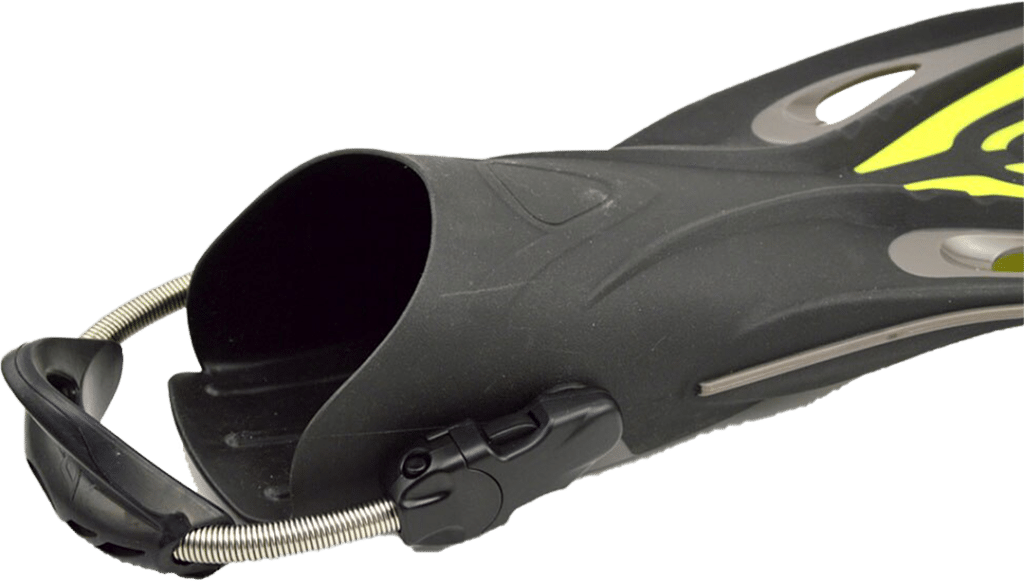
Today, most better-quality fins come with spring-heel straps or straps made from a bungee-like material.
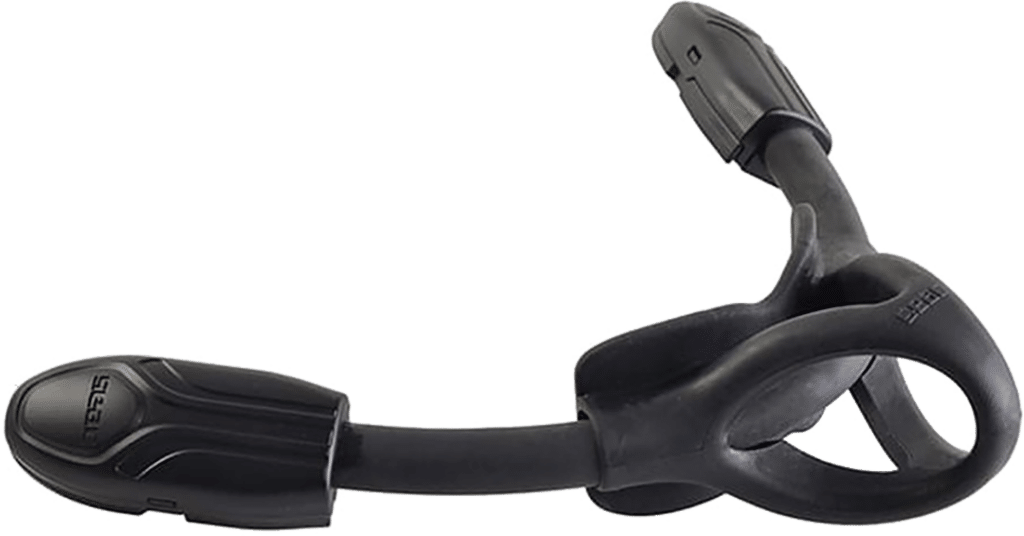
In fact, you are only likely to find quick-release straps on lower-end fins based on older designs.
The spring-heel experience
It’s fair to say that, once you try fins with spring-heel straps, you will never want to go back. Why?
- Spring-heel-straps are incredibly easy to don and remove. If you have ever struggled with older strap designs, this will completely blow you away.
- Assuming you get the right size to start, spring-heel straps need no adjustment. Unlike neoprene straps, which offer very little give, spring-heel straps are highly elastic, yet snap right back to their original position.
- Spring-heel straps automatically compensate for wetsuit boot compression at depth.
- Spring-heel straps will far outlast neoprene straps. They are, in fact, good for life.
Are there any downsides to spring-heel straps?
- If purchasing after-market straps, be sure to try them with your current fins and boots. You don’t want them to be too loose.
- Spring heel straps do cost more; however, users will tell you the expense is well worth it.
If you are still struggling with traditional fin straps, stop now. Come to The Dive Source and let us get you set up with a shiny new set of spring-heel straps. It will change your entire experience of diving.

